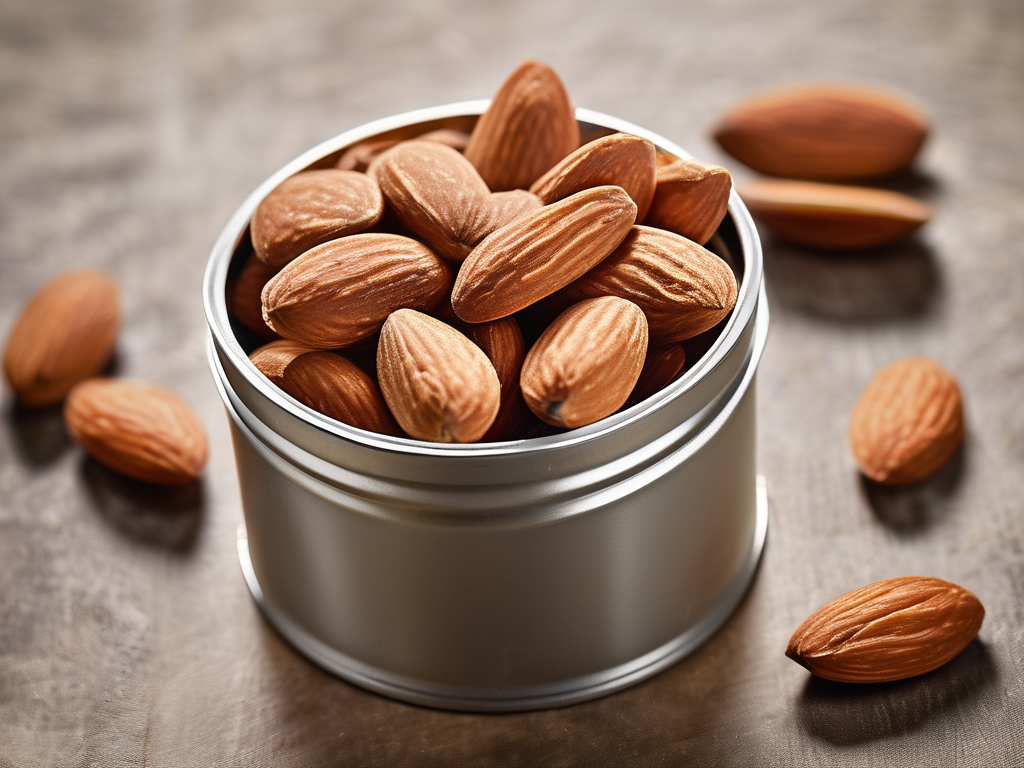
How to Store Canned Almonds Unopened for Long-Term Freshness
Get Your Free Food Safety Cheat Sheet
30 most common foods with instant answers. Print it and stick it on your fridge—completely free!
How to Store Canned Almonds Unopened for Long-Term Freshness
In today's blog post, we will discuss the importance of properly storing canned almonds unopened to ensure their long-term freshness and quality. Canned almonds are a popular and nutritious snack that can be enjoyed on their own or used in various recipes. By following the right storage guidelines, you can keep your canned almonds fresh and delicious for an extended period. Let's dive into the best practices for storing canned almonds unopened. (Canned almonds unopened)
Understanding the Shelf Life of Canned Almonds
Before we delve into storage tips, it's essential to understand the shelf life of canned almonds. Canned almonds typically have a long shelf life, thanks to their airtight packaging. When stored correctly, unopened canned almonds can maintain their quality and flavor for an extended period. It's crucial to check the expiration date on the can to ensure the almonds are safe to consume.
Factors Affecting the Shelf Life of Canned Almonds
Several factors can impact the shelf life of canned almonds, including:
- Temperature fluctuations
- Exposure to light
- Humidity levels
- Storage conditions
By taking these factors into account, you can ensure that your canned almonds stay fresh for as long as possible.
Best Practices for Storing Canned Almonds Unopened
Proper storage is key to preserving the freshness and flavor of canned almonds. Follow these guidelines to store your unopened canned almonds effectively:
1. Choose a Cool, Dark Location
- Store canned almonds in a cool, dark place away from direct sunlight and heat sources.
- Avoid storing them near appliances that generate heat, such as ovens or stoves.
- Opt for a pantry or cupboard with stable temperatures for ideal storage conditions.
2. Maintain Proper Humidity Levels
- Keep the storage area dry to prevent moisture from affecting the almonds.
- Avoid areas with high humidity, as moisture can lead to mold growth and spoilage.
3. Avoid Temperature Fluctuations
- Fluctuating temperatures can impact the quality of canned almonds.
- Choose a storage location with consistent temperatures to ensure the almonds remain fresh.
4. Use Airtight Containers
- If you choose to transfer the almonds from the can to another container, opt for airtight containers to maintain freshness.
- Make sure the container is clean and dry before transferring the almonds.
5. Check for Signs of Spoilage
- Before consuming canned almonds, inspect the can for any signs of damage, bulging, or leakage.
- If the almonds appear discolored, have an off smell, or taste rancid, discard them immediately.
Additional Tips for Storing Canned Almonds
In addition to the best practices mentioned above, consider the following tips for storing canned almonds unopened:
- Rotate your canned almond stock to use the oldest cans first.
- Label the cans with the purchase or expiration date to track their freshness.
- Keep an inventory of your canned almond supply to ensure you use them before they expire.
By following these tips, you can maximize the shelf life of your canned almonds and enjoy them at their best quality.
Conclusion
Properly storing canned almonds unopened is essential for maintaining their freshness and flavor over time. By storing them in a cool, dark place with stable temperatures and low humidity levels, you can ensure that your canned almonds remain delicious for an extended period. Remember to check for signs of spoilage before consuming the almonds and follow the recommended storage guidelines to enjoy them at their best. With the right storage practices, you can savor the taste of canned almonds for months to come. (Canned almonds unopened)
Authoritative Food Safety References
These agencies and university labs inform every tip and health precaution we publish.
USDA FoodKeeper – Cold Storage Guidelines
Official refrigerator, freezer, and pantry timelines maintained by the U.S. Department of Agriculture.
Visit USDA FoodKeeperFDA Produce Safety Rule & Grower Guidance
Field-to-fridge handling practices that prevent contamination of fruits, vegetables, and leafy greens.
Visit FDA Produce SafetyCDC Foodborne Illness Prevention Hub
Surveillance-backed guidance on pathogens, symptoms, and steps to reduce foodborne illness risk.
Visit CDC Food SafetyUC Davis Postharvest Technology Center
University research detailing optimal storage atmospheres for produce after harvest.
Visit UC Davis PostharvestPenn State Extension – Home Food Preservation & Safety
Peer-reviewed extension bulletins on safe canning, chilling, and reheating practices.
Visit Penn State ExtensionGet Your Free Food Safety Cheat Sheet
30 most common foods with instant answers. Print it and stick it on your fridge—completely free! Want more? Upgrade to the complete guide with 70+ foods.
Scan your food directly and get instant safety info using our AI-powered camera feature.